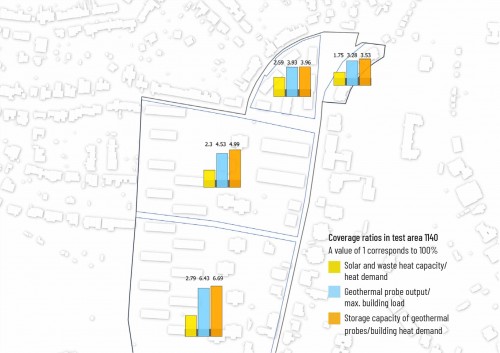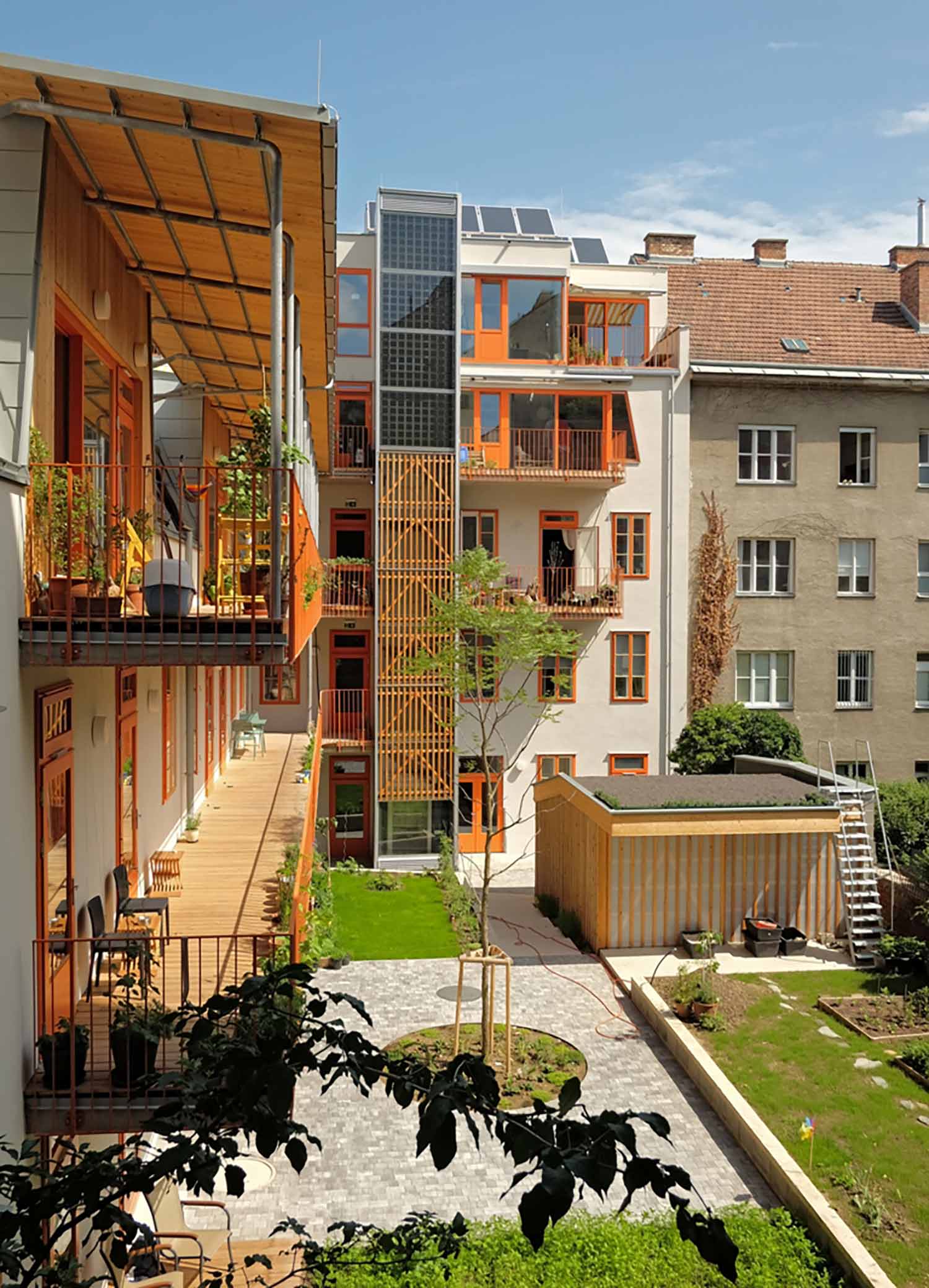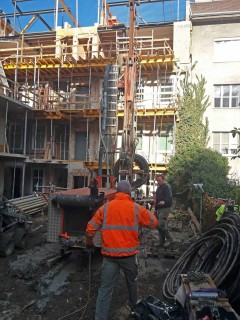New systems for sustainable heating and cooling in urban areas will make an important contribution to meeting the climate targets. Existing buildings in particular present a huge challenge. One pioneering concept is seasonal use of underground storage systems combined with renewable heat sources and waste heat, transmission pipelines and heat pumps in an “anergy network”. Local anergy networks are networks of pipelines that carry low-temperature water (around 4 to 30° C) between geothermal probe storage systems and the central heating and cooling systems of individual buildings or groups of buildings. In the buildings, heat pumps are used to raise the temperature to the level required. Anergy networks make it possible to create a multi-building energy supply by sharing heat sources and storage systems.
Smart block Geblergasse
Geblergasse is a project area characterised by dense building development dating back to the late 19th century; it is primarily residential and is located in Vienna’s 17th district. For the redevelopment and redensification of this area the focus was on testing a multi-property sustainable energy supply, as well as innovative mobility concepts and plans for increasing greenery and open spaces for the residents. As part of the exploratory study “SMART block step II – energy”1, guidelines for planning and realisation of this pilot project were formulated and the feasibility of an anergy network for a specific residential block was investigated. Implementation of the project began in August 2018.
Geothermal probes and hybrid solar collectors were installed in two buildings, and an anergy network was set up to provide transmission pipelines, in preparation for step-by-step expansion of the network within the residential block.
URBAN ANERGY
Building on the results of this pilot project, the current study, “AnergieUrban: Stufe 1: Die Stadt als Energiespeicher”2 uses the example of two large test areas in Vienna’s 14th and 16th districts to investigate whether this innovative concept is also suitable for supplying heat to a large area of existing buildings. The results of the study show that in both districts there is enough space to install the geothermal heat probes that would be needed, and enough potential heat sources in the form of waste heat and solar energy. 60% of the potential surface area required would be made up of public space such as pavements, parking areas and street surfaces. To allow the potential of these surfaces to be harnessed using geothermal heat probes, an appropriate legal framework needs to be established. According to the project’s calculations, the potential of available heat sources significantly exceeds the heating requirements of the buildings.
The cost comparison for a nineteenth-century “Gründerzeit” building over a 20 year period shows that the overall cost of continuing to use gas heating would be comparable to the cost of conversion to the solar/ground probe/heat pump system. From the twentieth year onwards the innovative energy supply concept is in fact significantly more economical, because the operating costs are lower than those of a gas-powered system.

cartography: Robert Kalasek 2020
1 PROJECT PARTNERS: Burtscher-Durig ZT-GmbH (project management), Jutta Wörtl-Gössler, ÖGUT Austrian Society for Environment and Technology, Komobile w7 GmbH, Martin Gruber, architect Johannes Zeininger.
An exploratory study as part of the “Smart Cities Demo” programme run by the Climate and Energy Fund.
2 PROJECT PARTNERS: ÖGUT Austrian Society for Environment and Technology (project management), TU Wien, Geological Survey of Austria ,
zeininger architekten.
A study commissioned by the Federal Ministry of Climate Action, Environment, Energy, Mobility, Innovation and Technology, the City of Vienna (Municipal Department MA 20) and the Austrian Association of Cities and Towns (Österreichischer Städtebund).
Share
